Romeo Rizzi
Hyper Temporal Networks
Mar 22, 2017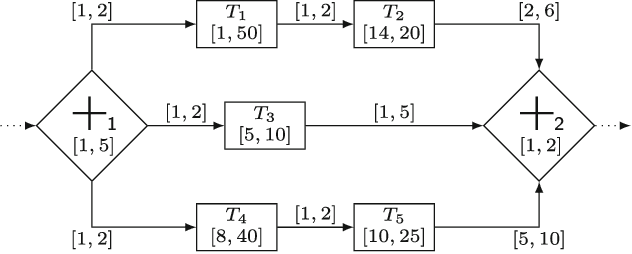
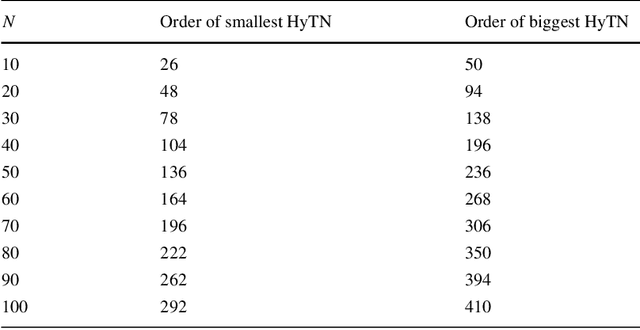
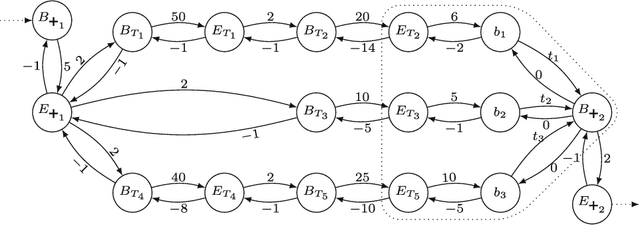

Abstract:Simple Temporal Networks (STNs) provide a powerful and general tool for representing conjunctions of maximum delay constraints over ordered pairs of temporal variables. In this paper we introduce Hyper Temporal Networks (HyTNs), a strict generalization of STNs, to overcome the limitation of considering only conjunctions of constraints but maintaining a practical efficiency in the consistency check of the instances. In a Hyper Temporal Network a single temporal hyperarc constraint may be defined as a set of two or more maximum delay constraints which is satisfied when at least one of these delay constraints is satisfied. HyTNs are meant as a light generalization of STNs offering an interesting compromise. On one side, there exist practical pseudo-polynomial time algorithms for checking consistency and computing feasible schedules for HyTNs. On the other side, HyTNs offer a more powerful model accommodating natural constraints that cannot be expressed by STNs like Trigger off exactly delta min before (after) the occurrence of the first (last) event in a set., which are used to represent synchronization events in some process aware information systems/workflow models proposed in the literature.
Decoding Hidden Markov Models Faster Than Viterbi Via Online Matrix-Vector (max, +)-Multiplication
Dec 11, 2015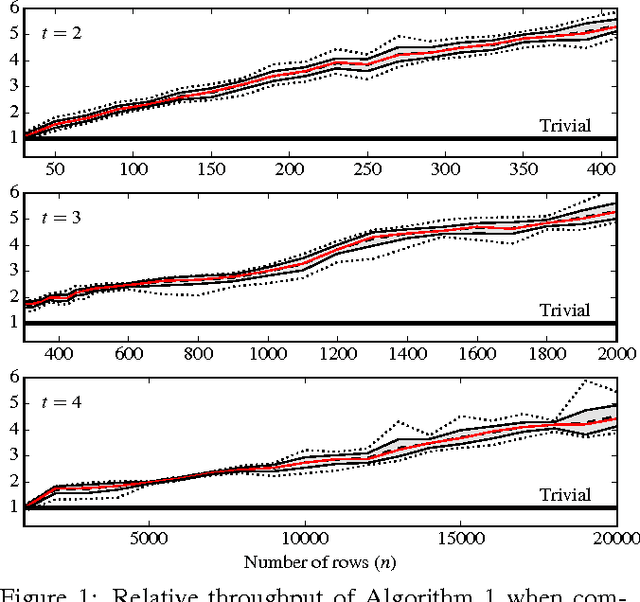
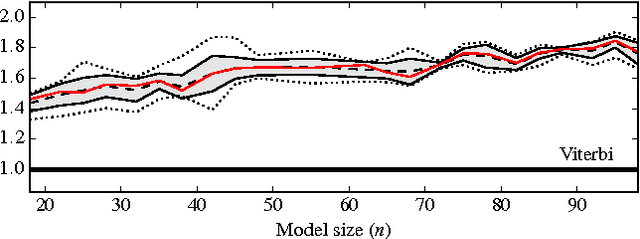
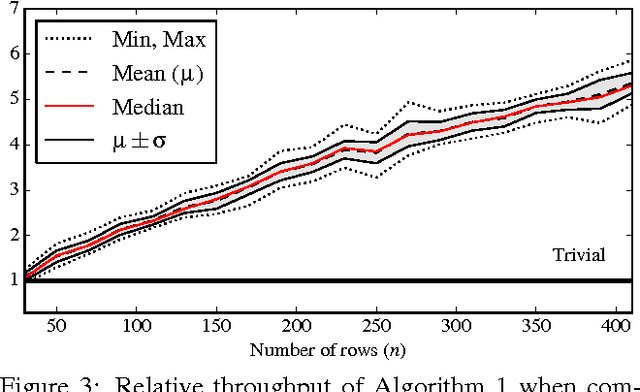
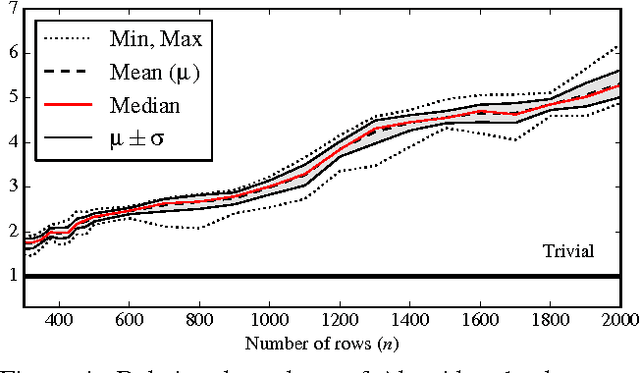
Abstract:In this paper, we present a novel algorithm for the maximum a posteriori decoding (MAPD) of time-homogeneous Hidden Markov Models (HMM), improving the worst-case running time of the classical Viterbi algorithm by a logarithmic factor. In our approach, we interpret the Viterbi algorithm as a repeated computation of matrix-vector $(\max, +)$-multiplications. On time-homogeneous HMMs, this computation is online: a matrix, known in advance, has to be multiplied with several vectors revealed one at a time. Our main contribution is an algorithm solving this version of matrix-vector $(\max,+)$-multiplication in subquadratic time, by performing a polynomial preprocessing of the matrix. Employing this fast multiplication algorithm, we solve the MAPD problem in $O(mn^2/ \log n)$ time for any time-homogeneous HMM of size $n$ and observation sequence of length $m$, with an extra polynomial preprocessing cost negligible for $m > n$. To the best of our knowledge, this is the first algorithm for the MAPD problem requiring subquadratic time per observation, under the only assumption -- usually verified in practice -- that the transition probability matrix does not change with time.
Dynamic Consistency of Conditional Simple Temporal Networks via Mean Payoff Games: a Singly-Exponential Time DC-Checking
Jul 17, 2015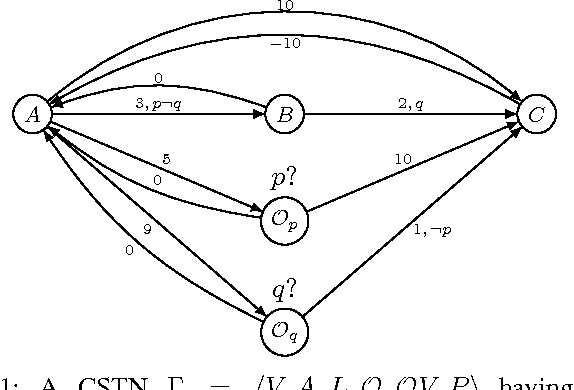
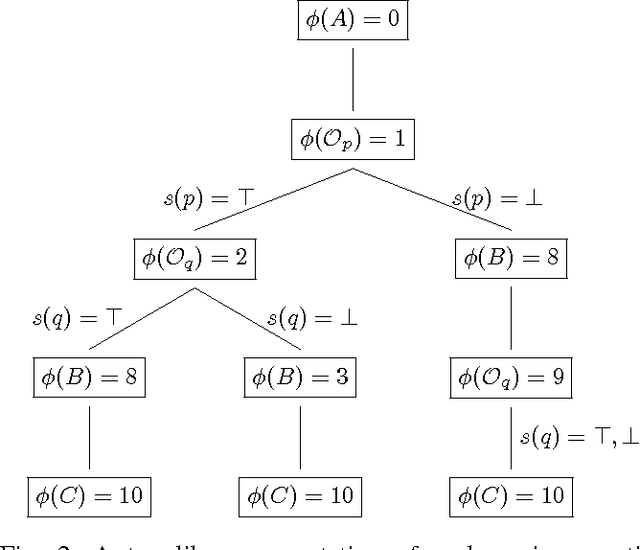
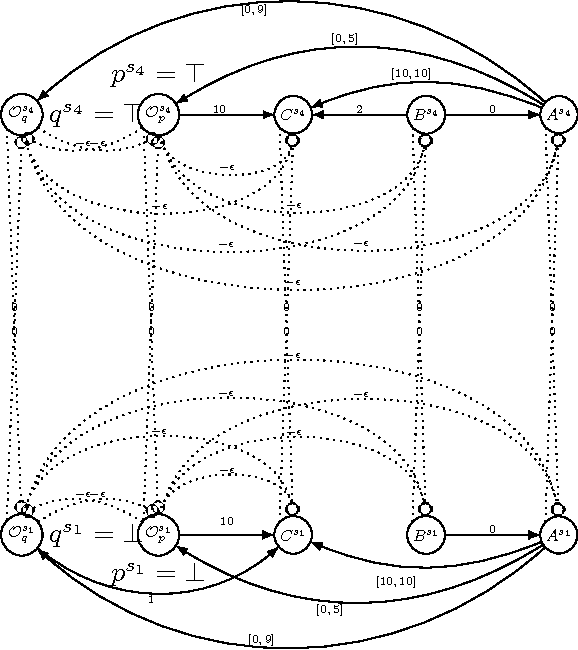
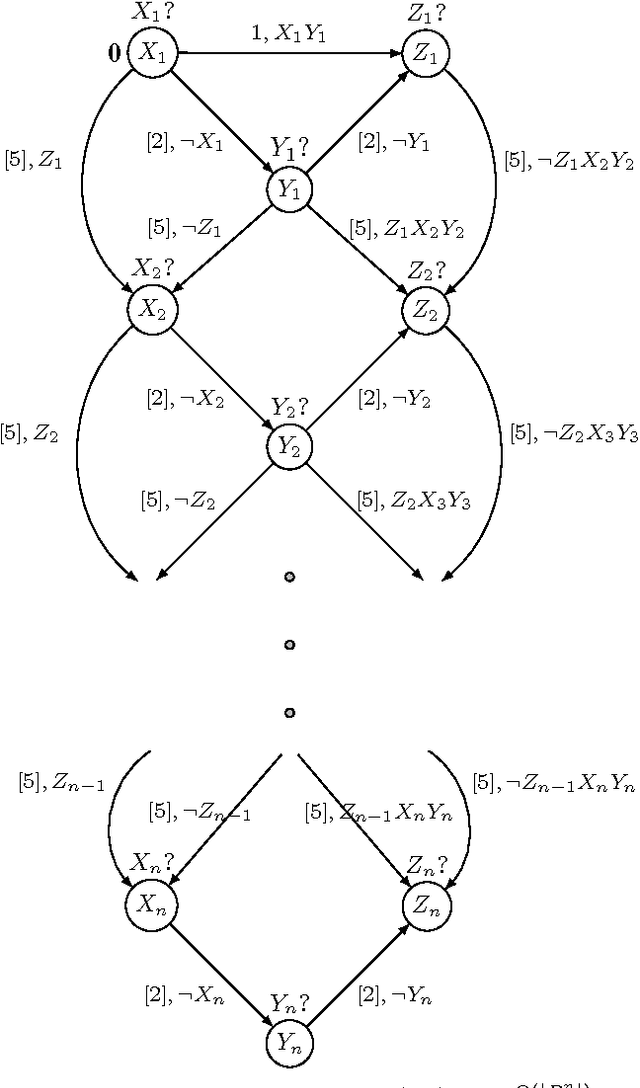
Abstract:Conditional Simple Temporal Network (CSTN) is a constraint-based graph-formalism for conditional temporal planning. It offers a more flexible formalism than the equivalent CSTP model of Tsamardinos, Vidal and Pollack, from which it was derived mainly as a sound formalization. Three notions of consistency arise for CSTNs and CSTPs: weak, strong, and dynamic. Dynamic consistency is the most interesting notion, but it is also the most challenging and it was conjectured to be hard to assess. Tsamardinos, Vidal and Pollack gave a doubly-exponential time algorithm for deciding whether a CSTN is dynamically-consistent and to produce, in the positive case, a dynamic execution strategy of exponential size. In the present work we offer a proof that deciding whether a CSTN is dynamically-consistent is coNP-hard and provide the first singly-exponential time algorithm for this problem, also producing a dynamic execution strategy whenever the input CSTN is dynamically-consistent. The algorithm is based on a novel connection with Mean Payoff Games, a family of two-player combinatorial games on graphs well known for having applications in model-checking and formal verification. The presentation of such connection is mediated by the Hyper Temporal Network model, a tractable generalization of Simple Temporal Networks whose consistency checking is equivalent to determining Mean Payoff Games. In order to analyze the algorithm we introduce a refined notion of dynamic-consistency, named \epsilon-dynamic-consistency, and present a sharp lower bounding analysis on the critical value of the reaction time \hat{\varepsilon} where the CSTN transits from being, to not being, dynamically-consistent. The proof technique introduced in this analysis of \hat{\varepsilon} is applicable more in general when dealing with linear difference constraints which include strict inequalities.
 Add to Chrome
Add to Chrome Add to Firefox
Add to Firefox Add to Edge
Add to Edge